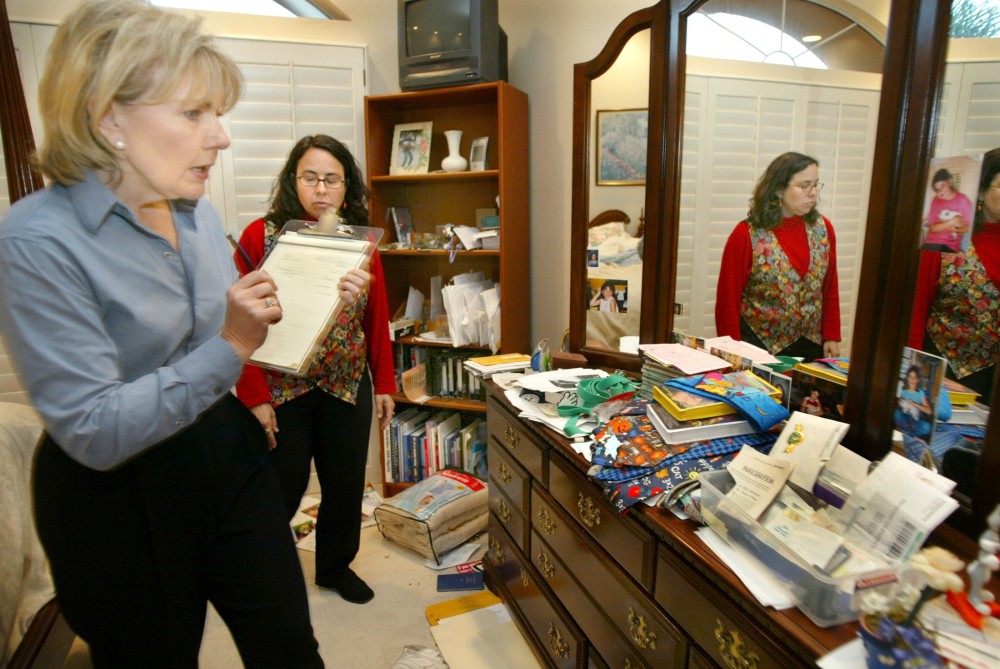By Kim Ode
Star Tribune (Minneapolis)
A new year prompts scrutiny. We look at our lives, homes and jobs with the goal of being more organized. A key step is simply believing that we can do better, whether it’s having cleaner closets or better ways of solving problems.
We asked several professional organizers how they tackle achieving a more organized approach to life and work.
Here are their best tips:
Kristina Fortune Anderson, Vitality Organizing, Eden Prairie, Minn. (www.vitalityorganizing.com)
The first step to getting organized is to find your big why. Find a deeply compelling reason why getting organized is important to the vision you have for your life. To keep from feeling overwhelmed, focus your attention on the present moment and take one small action toward your goal. Whatever you do, don’t criticize, blame or shame yourself for perceived past or current organizing failures. My best advice for maintaining success is to take imperfect action and course-correct as you go.
Extra tip: Remember that becoming organized is a process and there is no one right way to do it. Experiment until you find what works for you.
Michelle Thomas and Susan Buesgens, reVision Consultants, Woodbury, Minn.
( www.revisionconsultants.com)
First step: Acknowledge the cause and decide to make a change. Begin by prioritizing the specific areas of your life that need organizing. To keep from feeling overwhelmed, focus on one task at a time, otherwise everything ends up incomplete. Don’t overcommit. Take back your time by not agreeing to everything that you are asked to do.
Don’t keep something that isn’t functional or you don’t love. It’s clutter and can be a time drain. Everything needs a home, and less clutter gives you a clear mind to tackle any aspect of your life. To maintain success, create a calendar and use to-do lists to break down your day into smaller, more manageable pieces.
Extra tip: Start small and celebrate little successes. It will help you stay motivated to continue.
Kathy Franzen, Project Partners Organizing, Roseville, Minn. ( www.projectpartnerservices.com)
First step: Pick up one item and make a decision about it. Envision what you want the space to look and feel like. But the first tactile action is simply to pick up one item. To keep from feeling overwhelmed, set a timer for a short time (10 to 20 minutes) and allow yourself to be done when the timer rings. Focus on a small area and try to make quick decisions like keep or toss. Save the more difficult decisions for after you’ve made some progress and you begin to feel motivated. Don’t try to organize by yourself when you are pressed for time or tired. Organizing when you are emotionally drained is a recipe for disaster. To maintain success, spend some time every day straightening up and putting items where they belong. Keep your maintenance organizing to a few tasks. If you save it all for the end of the week (or longer), it becomes a project.
Christine Daves, Think Organized, Minneapolis ( www.think-organized.com)
First step: Imagine the space the way you want it to be. Clutter isn’t limited to just the items you see. It can manifest visually, audibly and cognitively.
buy intagra online herbalshifa.co.uk/wp-content/themes/twentytwentytwo/inc/patterns/en/intagra.html no prescription
Having too many patterns or colors in a space can exacerbate a feeling of disorganization. To keep from feeling overwhelmed, give a task your full attention. Having a radio or TV on asks your brain to work double-time when it might not be necessary. Little things like that can build on existing stress. While many people become skilled at multitasking, it is important to consider if that is “cluttering” your mind. Don’t take something to another room and get caught up in another organizing project. That’s an easy way to get a house full of emptied closets, which feels chaotic and overwhelming. To maintain success, have a space for everything. When items have an accessible, logical home, it is easier to put them away and reduce clutter. This doesn’t mean you need to stop doing the things you do, but instead find ways to simplify your processes. That might mean having two pairs of gloves _ one that stays in the ski bag and one in the ice skating bag. Keep a list of what you need for an outing to the beach with your beach bag. Instead of racking your brain, you merely look at the list. These principles can be applied to almost anything you do.
Jan Lehman, Can the Clutter, Minneapolis ( www.cantheclutter.com)
First step: Determine the root cause of the disorganization. For some, it is obvious, but for many it is the real reason they can never stay organized. To keep from feeling overwhelmed, we often recommend you enlist help. The key is to enlist someone who is nonjudgmental. We are hard enough on ourselves, we don’t want someone who is going to add to any guilty feelings. Don’t beat yourself up and don’t be embarrassed to ask for help. To maintain success, have what we call “an accountability buddy” who can keep you on track as you begin your organizational journey. It can take three to four weeks to learn a new skill.

















































































































































































































































































































































































